Chinese Name: 清河坊街 Pronunciation: Qīng Hé Fāng Jiē
Admission Ticket Fare: Free
Opening Hours: All day
Best Visiting Season: All seasons
Building Function: A popular street for shopping
Recommended Time for Visit: 2-5 Hours
Address: Shangcheng District, Hangzhou, Zhejiang Province
Occupied Area: 13 hectares (130,000 square meters)
Popular Activities: Tasting local snacks and enjoying the tea culture
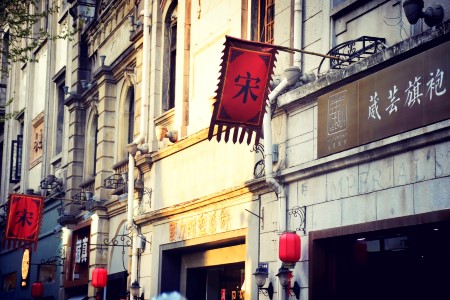
The Qinghefang Ancient Street, also known as Hefang Street, is situated near Wushan Hill and by the West Lake. Now it comes to be a must-visit place in Hangzhou. The street covers an area of 13 hectares (130,000 square meters), and its length is about 460 meters. It serves as one of the most flourished streets in Hangzhou where visitors can go shopping in century-old shops, enjoy local snacks, experience tea culture, and admire the ancient buildings in Hangzhou.
In terms of architectural styles, some buildings on the street symbolize the style in the Ming (1368-1644) and Qing (1636-1912) Dynasties, and some are characterized by the Western Baroque style. They represent the natural and graceful features with Chinese traditional style, as well as show a sense of inclusiveness. Witnessing the vicissitude of Hangzhou, the street has become a tangible cultural heritage for the Chinese nation.
In terms of its layout, the street is divided into two parts. Buildings on both sides of the street are used for commerce, and pavilions of antique beauty are set in the middle of the street. Visitors can buy local products, such as Hangzhou silk, tea, calligraphy work, and handicrafts in the commercial buildings. They can also take photos at the pavilions on the street.
In terms of folk art, the local government supports and encourages folk artists to perform in the Qinghefang Ancient Street. On the one hand, the folk arts can be well protected through this special stage. On the other hand, the ancient street can be more booming with the help of these artists. For instance, strolling down the street, visitors will be surprised by the sugar-figure blowing artist (using sugar as the main ingredient, and then blowing it into various figures).
The Qinghefang Ancient Street has been a prosperous commercial area in Hangzhou since ancient times. To the east of Xingong Bridge in Hefang Street is the site of Deshougong Palace, Emperor Gaozong's (1127-1162) palace in the Southern Song Dynasty (1127-1279).
In 1129, Zhang Jun was appointed as the governor of Qinghe County for his remarkable contribution in the battle, so this area was named Qinghefang. At that time, many shops, restaurants, and teahouses lined up down the street, with their businesses thriving.

The street has witnessed the rise and fall of several dynasties –the Yuan Dynasty (1271-1368), the Ming Dynasty (1368-1644), and the Qing Dynasty (1636-1912), and it is still a bustling commercial area in Hangzhou now. Many century-old shops in Hangzhou are laid intensively in this area. Most of the existing ancient buildings here were built during the end of the Ming Dynasty or the beginning of the Qing Dynasty.
In 2000, the Shangcheng District government carried out a project for the Qinghefang Ancient Street. The project was to protect the ancient buildings and develop new streetscapes to preserve its original features while adding new colors.
In October 2002, the Qinghefang Ancient Street was officially opened, one and a half years after the renovation and protection project was launched. Lots of time-honored brands were preserved, and some new shops that sell local specialties and other souvenirs were opened for tourists. Nowadays, exuding an ambiance of the past street culture, this redeveloped street becomes a popular place for visitors at home and abroad.
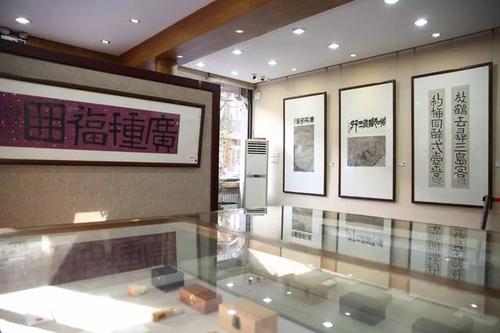
Hangzhou Rongbaozhai is a branch store of Beijing Rongbaozhai which shows the country's art trends. The Rongbaozhai was originally named Songzhuhai, firstly established in 1672. It is now the biggest gallery in the Qinghefang Ancient Street and houses a large number of masterpieces.
The main business of Rongbaozhai is to sell tools used for calligraphy and painting, such as pens, paper, and ink. It also exhibits some works of artists. On the first floor, books are arranged on the left side, and some art crafts are on the right side. On the second floor, there is room for calligraphy and paintings.
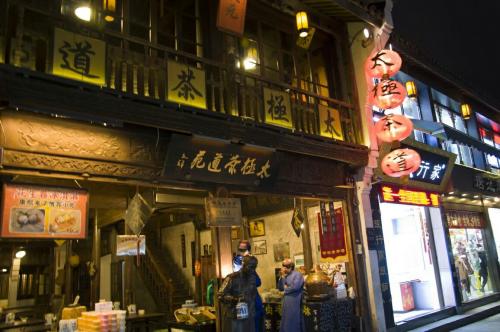
The Taiji Teahouse was operated by the Zheng family’s offspring. As early as the reign of Emperor Qianlong (1736-1796) of the Qing Dynasty, this family started their teahouse business. Because the Taiji Teahouse attaches great importance to the quality of raw materials and tea preparation skills, it has become the most popular teahouse on this street.
Now people can come to the teahouse, drinking a cup of tea, listening to Pingtan (评弹) music (storytelling and ballad singing in Suzhou dialect), and experiencing the leisure life of the local people. This teahouse is a good place for foreign visitors to acquire knowledge about tea culture and feel the historical ambiance of the Qinghefang Ancient Street.
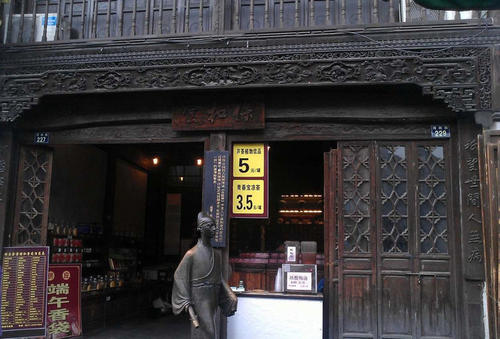
The Baohetang Pharmacy is one of the most famous stores selling Chinese traditional herbal medicine with a history span of near one thousand years. In the past, the pharmacy provided treatment and medicine to the poor in the Qinghefang Ancient Street almost for free, thus enjoying a good reputation. However, it lost out to competition from other new pharmacies and was closed finally.
As the project for the Qinghefang Ancient Street was launched, this ancient brand was also under the government’s protection, and the pharmacy took on an entire look with a new shape. At present, it mainly sells some self-made medicinal liquor and medicinal tea.
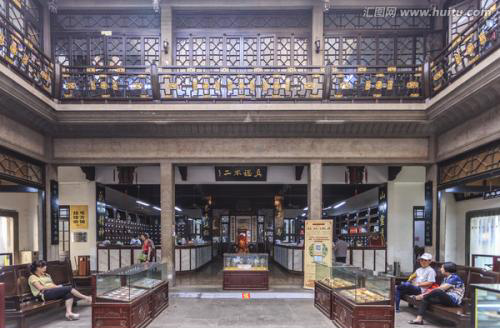
Founded by a businessman Hu Xueyan in 1874, the Huqingyutang was a pharmacy famous for its integrity management. Nowadays, it still exists as a time-honored brand. Covering an area of 3,000 square meters, the old building on the Qinghefang Ancient Street is now under state protection and becomes a museum for traditional Chinese medicine.
More than 160 pieces of relics are preserved in the museum. On the first floor, there is a hall displaying various kinds of medicines through which visitors will have a basic understanding of traditional Chinese medicine. They will get to know what the medicines are like and the usage thereof. On the second floor, visitors can see several cultural relics showing the evolution of the pharmacy as well as the culture of traditional Chinese medicine.
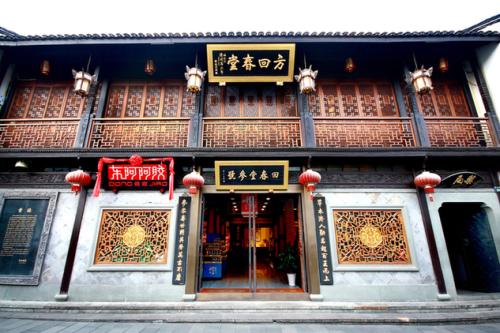
Established in 1649, the Fanghuichun Pharmacy ranked in the top six pharmacies in the late Qing Dynasty and was merged into the Huqingyutang Pharmacy after 1955. The ancient building of Fanghuichun Pharmacy boasts an area of 2,500 square meters, and its overall layout typically represents the architectural features of the Ming and Qing Dynasties. As they admire the historical items displayed in this well-designed building, visitors can also learn about the culture of this brand.
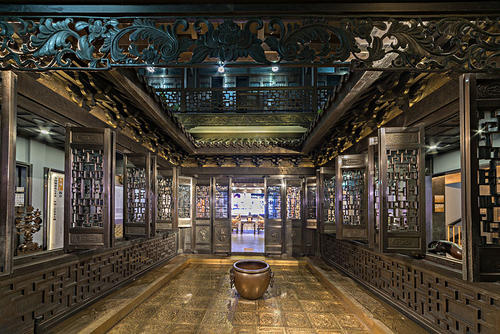
Zhu Bingren Bronze Art Museum is the only treasure-house of bronze sculpture in China. This museum mainly houses the bronze works created by Zhu Bingren. Master Zhu, born in 1944, is an influential artist in China. He uses copper as the raw material to create painting, sculpture, architecture, and calligraphy.
The museum is large in scale with a total building area of nearly 3,000 square meters. Except for the walls and floors, the doors, windows, and pillars of the museum, as well as its furniture and decorations, are all made of a total of 125 tons of raw copper.
The masterpieces stored in this museum are beyond people’s imagination, and even bronze murals and bronze Buddha statues can be seen here. Visitors can admire both the unique bronze art culture and Buddhist culture. The layout of the museum is also characterized by the south of the Yangtze River style with connected corridors. The light of the bronze works is flashing, and the traditional building shows its elegance. All of these reveal a sense of harmony.
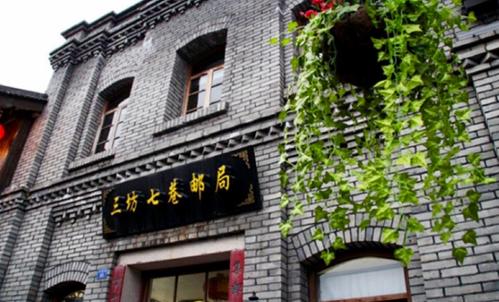
The Hefang Street Post Office was opened in the Ming Dynasty. Located in the north of the Qinghefang Ancient Street in Hangzhou, the post office was firstly called Wushan Station. In 1914, it was renamed Dajingxiang Post Office and relocated to Qinghefang Ancient Street. Witnessing the changes of time, it was rebuilt in 2001. As a historical site representing the culture of the ancient street, the old post office was named after the street.
Now it still handles various postal services and sells featured stamps on the street. Visitors can choose exquisite postcards and send them to friends and relatives. On the second floor, there is an exhibition hall for visitors to learn the history of postal service in China.
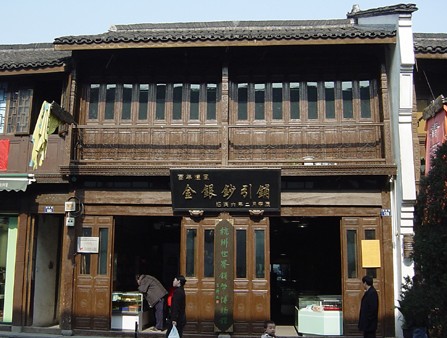
Upon setting foot in the World Coin Museum, visitors are entering a world of coins. The first floor sells all kinds of Chinese commemorative coins. On the second floor, an exhibition for currency is held, in which coins and paper currency in circulation from more than 200 countries and regions are on show.
Besides, visitors can also see gold and silver commemorative coins and historical currencies from various countries in the world. Among them, historical coins of Southeast Asian countries are very attractive to visitors.
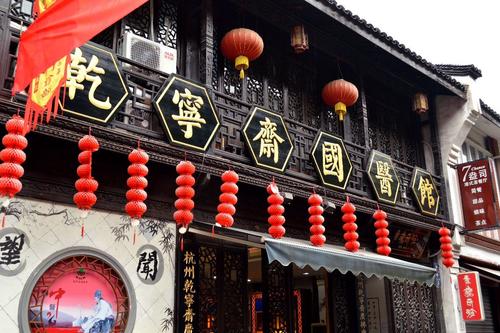
Zhejiang Province is home to ancient ceramic products. More than 7,000 years ago, Hemudu ancestors used ancient ceramics as utensils in their daily life. In the Liangzhu (良渚) culture period, ceramics were widely used for decoration. With a high level of both artistic value and practical value, their beauty was so charming.
To introduce the ceramic culture to people all around the world, the local government set up this museum on the Qinghefang Ancient Street. The museum collects more than 400 precious ceramic items, emphatically reflecting the evolution of the 7000 years of human development in Zhejiang.
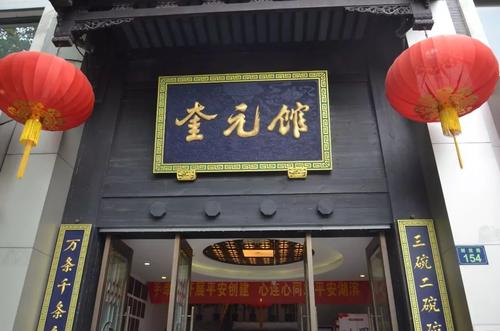
Zhuangyuanlou Restaurant was opened in 1870 by Wang Shangrong, a businessman from Ningbo city. In 1938, the restaurant was relocated to the Qinghefang Ancient Street. Famous for its good taste of noodles, it was once reputed to be the No. 1 noodles restaurant in Hangzhou. Now the Zhuangyuanlou Restaurant offers not only different kinds of noodles but also a variety of cuisines, such as Sichuan cuisine, Ningbo cuisine, and Hangzhou cuisine.
The restaurant now has two halls on the first and second floors. There are 20 private rooms suitable for buddy parties, banquets, weddings, and birthday parties. It is a perfect place for visitors to taste local food in Hangzhou, and at the same time, they can appreciate the old building and its vintage furniture.
According to a legend, Hu Xueyan’s concubine fell ill, so he sent a servant to a famous pharmacy to buy medicine. After taking the medicine back, Hu found that several medicines had become moldy and deteriorated. He immediately asked the servant to return the moldy medicine and take good ones. However, the boss of the pharmacy refused the request and said that they only had that kind of medicine, and if Hu wanted the good ones, he could open a new pharmacy himself.
Hu Xueyan was furious after hearing this and determined to open the biggest pharmacy in this area. In 1874, Hu began his preparations for the establishment of the Huqingyutang Pharmacy. Soon, the pharmacy was completed and opened. Hu Xueyan did not forget what happened before, writing “No cheating” on a plaque and hanging it inside the hall to remind his staff.
Hu invited many famous doctors to his pharmacy to study the prescriptions of past dynasties and purchased authentic medicinal materials to make medicine. As a result, his pharmacy obtained a good reputation nationwide. At that time, the Huqingyutang Pharmacy was as famous as the Tongrentang Pharmacy.
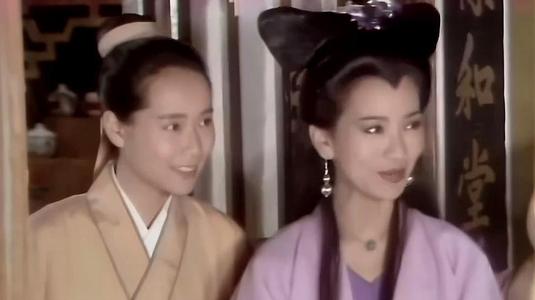
As a time-honored brand on the Qinghefang Ancient Street, the Baohetang Pharmacy also witnessed a love story. It was said that a young man, Xu Xian, was an apprentice in the pharmacy when he met and fell in love with his wife Bainiangzi (白娘子, Lady White). Bainiangzi, who was not an ordinary human as Xu Xian, but was originally a white snake saved by Xu Xian many years ago. It had practiced asceticism for more than 1,000 years, and God let it become a beautiful lady to return the favor to Xu Xian.
The first time when Xu Xian and Bainianzi met with each other was on a bridge called Broken Bridge. When they walked on the bridge, it became rainy suddenly. Bainiangzi, however, did not bring an umbrella with her. So Xu Xian shared his umbrella with her and started their first talk. After that, they soon fell in love with each other.
They soon got married and returned to the Baohetang Pharmacy. Xu Xian was famous for his superb medical skills, and his wife, Bainiangzi used her magic power to help those ill and poor people. They were so kind that they gained the respect of all residents who lived here.
Zhang Xiaoquan Scissors is one of the traditional brands in China founded by Zhang Xiaoquan. As the story goes, the handles of the scissor were straight at the very beginning, and then they were made in a curved shape thanks to Zhang’s ideas.
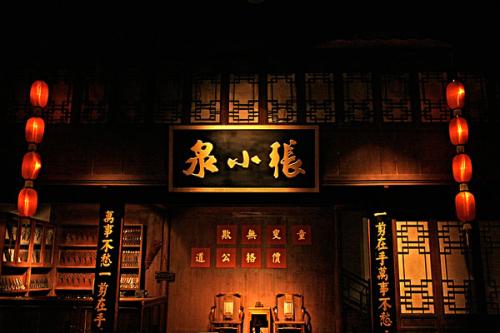
After Zhang Xiaoquan, the blacksmith, came to Hangzhou, the water within a well became black with a foul smell. This well, however, was of great importance because it nourished hundreds of households. One person in the crowd said that this well led to the Qiantang River in which two basilisks came here to lay eggs every ten years. If residents wanted to clear this well, they must remove the two snakes.
Hearing that, Zhang Xiaoquan wanted to have a try. Relying on his good ability in swimming, he went down to the well to kill snakes. After Zhang took a shower with realgar wine, he jumped into the well with a big hammer in his hand and dived into the bottom of the well. He saw the two snakes and hit them with the hammer. The two snakes were killed, and the water in the well was immediately cleared.
Zhang Xiaoquan is a thoughtful person. He imitated the curved snake tail and created a pair of scissors with curved handles. Scissors with curved handles were more useful than scissors with straight handles. Since then, the scissors made by Zhang Xiaoquan were all featured in a curved shape.
Baohetang Pharmacy →Huqingyutang Pharmacy →Fanghuichun Pharmacy →Rongbaozhai Gallery →Zhuangyuanlou Restaurant (having lunch or dinner) →Zhu Bingren Bronze Art Museum →World Coin Museum → Taiji Teahouse (enjoying a leisure time) →Hefang Street Post Office →Ancient Ceramics Museum
Take bus No. 8, 13, 66, 127, 71, 190, 198, 308, or 352 and get off at the Gulou Station. After 5 minutes’ walk, you will arrive at the destination. The fare is about 2 yuan.
Take Metro Line 1 and get off at the Ding'an Road Station and Exit C. After 10 minutes’ walk, you will arrive at the destionation.
Chinese: 请带我去清河坊街。English: Please take me to the Qinghefang Ancient Street.
If you go to the Qinghefang Ancient Street from the center of Hangzhou (Sofitel Hangzhou West Lake Hotel), it takes about 10 minutes (about 15 yuan).
If you go to the Qinghefang Ancient Street from Hangzhou International Airport, it takes about 1 hour (about 100 yuan).
If you go to the Qinghefang Ancient Street from Hangzhou Railway Station, it takes about 10 minutes (about 15 yuan).
If you go to the Qinghefang Ancient Street from Hangzhou South Railway Station, it takes about 1 hour (about 65 yuan).
If you go to the Qinghefang Ancient Street from Hangzhou East Railway Station, it takes about 35 minutes (about 40 yuan).
